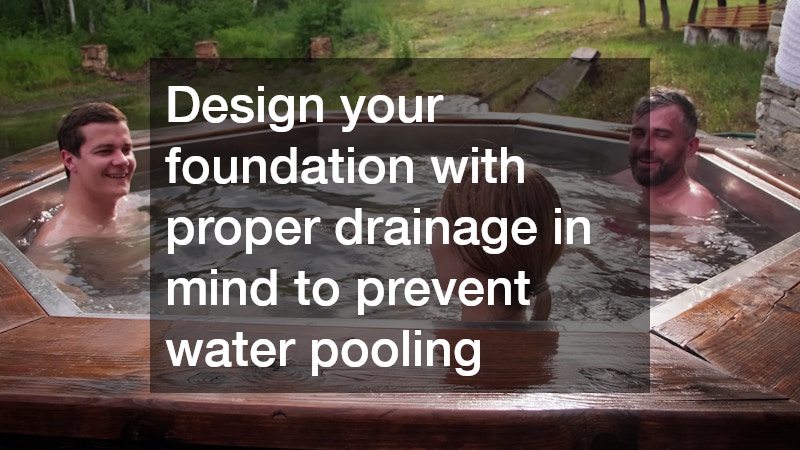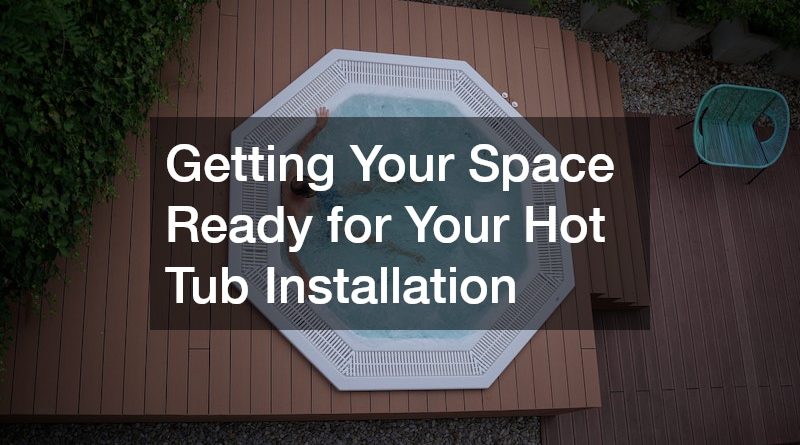Getting Your Space Ready for Your Hot Tub Installation
The allure of owning a hot tub is undeniable. Whether you’re looking to relax after a long day or enjoy some quality time with family and friends, a hot tub can be an excellent addition to your home. However, it’s essential to prepare your space adequately before installation. This article will guide you through the process and answer some of the most commonly asked questions about getting your space ready for a hot tub installation.
What is the Best Location for a Hot Tub?
Ensure there is enough space not just for the hot tub itself, but also for maintenance and usage, considering factors such as access and proximity to utilities. A good rule of thumb is to leave at least 3 feet of clearance on all sides of the hot tub for easy access and cleaning.
Additionally, assess whether the site is convenient for the transportation of the hot tub upon delivery to avoid unnecessary hurdles.
Consider the distance to utilities like water, electricity, and drainage, which are essential for the proper operation and maintenance of the hot tub. Having your hot tub close to your home can minimize exposure to the elements during colder months, thereby reducing potential damage to components. Evaluate if there are any obstacles to usage, such as tree branches or overhead power lines, which might pose safety risks.
Space planning should also account for the social aspect of hot tub use, ensuring there is room for seating or mingling. A hot tub should be as much about social gathering as it is about relaxation; providing comfortable spaces can enhance these experiences. Overcrowding the area can lead to decreased enjoyment and possibly cause safety hazards.
Select a location that maintains your privacy while complementing your home’s aesthetics, and consider landscaping or additional privacy screens if necessary. Using elegant privacy screens or fencing can enhance your hot tub area visually while serving functional purposes. If your home is in a densely populated area, these considerations become even more vital to create a secluded retreat.
Balancing aesthetics with privacy may involve creative landscaping solutions like planting hedges or constructing trellises with climbing plants. This not only offers seclusion but enriches the visual appeal of your outdoor space. Proper landscape planning can mitigate the view of unsightly power units or other less attractive elements of the hot tub installation.
What Are the Electrical Requirements for Hot Tub Installation?
Identify if your hot tub requires a standard 110v connection or a more robust 220v, and ensure your home’s electrical system can handle the load. Different models may have different electrical needs, impacting installation intricacies and costs associated with adapting your home to meet these specifications. Not accounting for the electrical needs can result in insufficient heating or increased energy costs.
A 110v hot tub is often known as a ‘plug-and-play’ option that requires less electrical work but may lack the heating efficiency of its 220v counterpart. Conversely, a 220v hot tub may offer superior heating capabilities but will need a dedicated circuit, increasing the scope of the installation project. Weigh these considerations with planned usage and geographical climate to select the right model for your needs.
Calculating amperage demand entails reviewing the hot tub’s specifications compared to the capacity of your existing home electrical system. Falls short of these requirements may necessitate upgrading circuit panels or other components. Ensuring this capacity eliminates risks associated with overloading and helps maintain uninterrupted spa functionality.
Engage a certified electrician to handle the wiring and ensure adherence to local codes and regulations for safety and compliance. Proper installation not only prevents electrical faults and hazards but also ensures your warranty remains valid for the longevity of your hot tub’s components. Equipped professionals possess the skills to manage complex tasks, safeguarding your investment and home.
How to Prepare the Surface for a Hot Tub Installation?
Explore options such as concrete pads, pavers, and reinforced decks to find the best surface for supporting your hot tub. Each foundation material has pros and cons, and your choice should consider both immediate and long-term stability. A concrete pad is often favored for its resilience and capacity to distribute weight evenly.
Pavers may offer a variable, more aesthetically pleasing option that can complement outdoor settings, yet may require more detailed preparation. Reinforced decks provide elevation and style but need careful attention regarding both structural integrity and allowable weight capacity. Weighing factors such as cost, durability, and aesthetics provides a holistic view when making your decision.
Utilize natural contours and existing outdoor structures to frame your hot tub area harmoniously. Integrating different patterns or designs with the selected foundation material creates a cohesive visual effect. Utilize local expertise to identify which foundation materials work best, given your site’s specific characteristics and climate.
Design your foundation with proper drainage in mind to prevent water pooling, which could damage the hot tub or surrounding areas. Without adequate drainage, accumulated water can lead to environmental damage or structural concerns such as eroding substrates. Strategically positioned slopes or channels help direct excess water away from critical zones.
By stabilizing and leveling your installation site, you preserve the structural soundness of the hot tub. Current and future users benefit from consistent experiences free from movement-induced wear. Mature preparations remove user anxieties and maximize enjoyment and safety for your entire installation’s lifespan.
Preparing your space for a hot tub installation is crucial for both the safety and enjoyment of your new relaxing fixture. By considering the hot tub’s location, electrical requirements, and surface preparation, you set the stage for a successful and stress-free installation. Taking these steps ensures that your hot tub remains a source of enjoyment for years to come.

